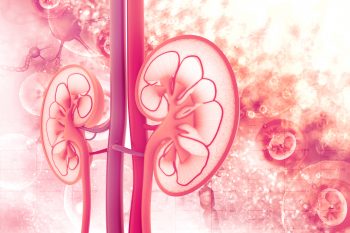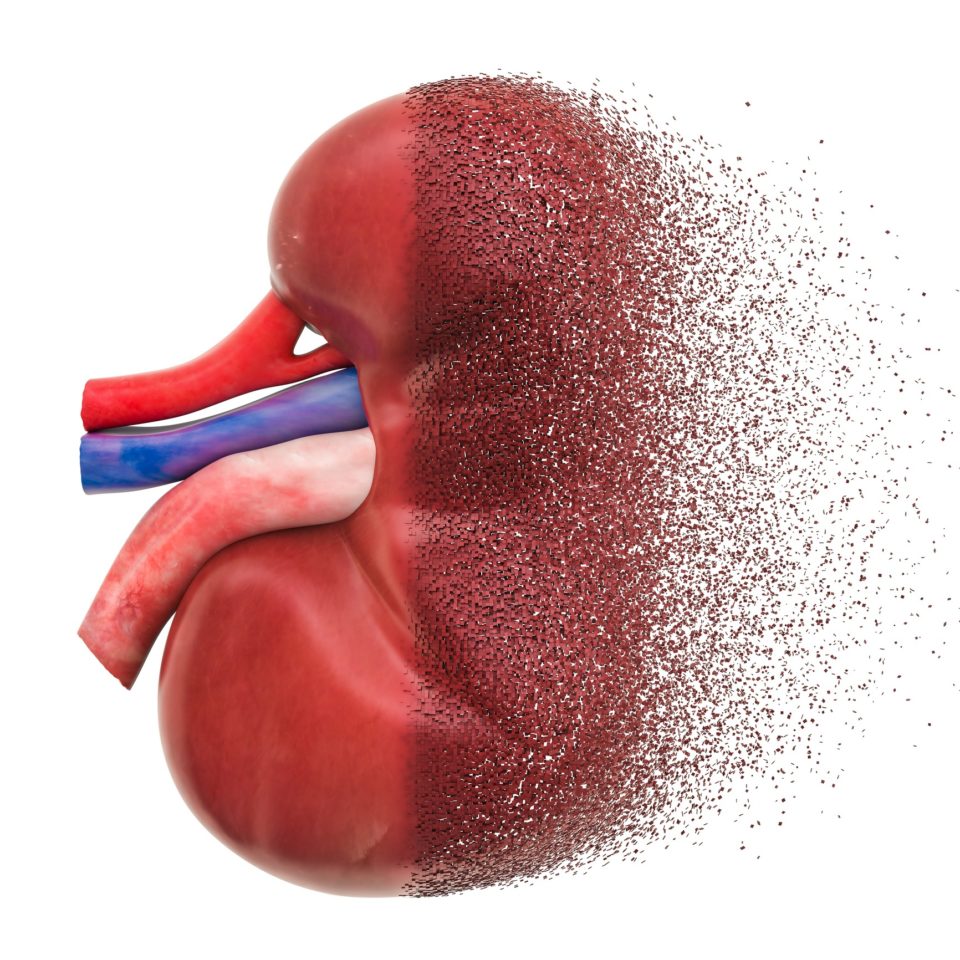
Washington, DC—Patients with gastroesophageal reflux disease and peptic ulcer disease are commonly treated with proton pump inhibitors (PPIs) that block hydrogen potassium ATPase (H+, K+ -ATPase). H+, K+ ATPase is present in other organs, including the kidneys.
The progression of kidney disease can be hastened by metabolic acidosis. Researchers at Tulane University, led by Sixto G. Giusti, MD, conducted a study to examine the relationship between chronic PPI use in patients with chronic kidney disease (CKD) stages G3a to G4 and the development of metabolic acidosis and rate of kidney function decline. The study was designed to test the hypothesis that patients with CKD who have been on PPI therapy for at least 1 year would have a higher prevalence of metabolic acidosis and faster progression of CKD compared with patients not on PPI therapy.
Results of the study were reported during a poster session at Kidney Week 2019 in a poster titled The Effect of Proton Pump Inhibitor Use on the Development of Metabolic Acidosis and Decline in Kidney Function in Patients with CKD Stages G3a to G4.
The researchers utilized data from the Veterans Administration Informatics and Computing Infrastructure national database system. The study included adult patients with CKD (defined as estimated glomerular filtration rate [eGFR] <60 mL/min/1.73 m2) and a record of receiving care for a minimum of 5 years at the VA from January 1, 1999, through May 31, 2018. Exclusion criteria were dialysis, renal transplant, or death. Outcome measures of interest were mean serum bicarbonate and progression of CKD, measured by decline in GFR determined by the Modification of Diet in Renal Disease study equation.
The PPI group was matched to a control group using Propensity Score Matching on age, sex, race, and Charlson Comorbidity Index. The associations of PPI use with metabolic acidosis, dialysis, all-cause mortality, and progression of CKD were analyzed using Kaplan-Meier curve and Cox regression models. Progression of CKD was defined as a 10 unit decrease of eGFR from baseline eGFR.
In the final sample, the PPI cohort included 1406 patients; mean age was 62.07 years and 62.02% were white. Median follow-up was 4.7 years. The control cohort (no PPI use) included 573 patients; mean age was 63.25 years and 70.33% were white. Median follow-up was 4.2 years.
Compared with the control group, the PPI group had a significantly increased risk of CKD progression and dialysis (adjusted hazard ratio [aHR], 1.43; 95% confidence interval [CI], 1.17-1.74 and aHR, 1.69; 95% CI, 1.03-2.77, respectively). The risk of metabolic acidosis and all-cause mortality were also higher in the PPI group than in the control group, but the differences did not reach statistical significance (aHR, 1.83; 95% CI, 0.88-3.82 and aHR, 1.25; 95% CI, 0.96-1.64, respectively).
In summary, the researchers said, “The data suggest that chronic PPI accelerates progression of kidney disease in CKD patients. Chronic PPI use should be discouraged in this population.”
Source: Giusti SG, Lin Y, Liu S, Nakhoul NL, Shi L, Batuman V. The effect of proton pump inhibitor use on the development of metabolic acidosis and decline in kidney function in patients with CKD stages G3a to G4. Abstract of a poster presented at the American Society of Nephrology Kidney Week 2019 (Abstract TH-PO452), November 7, 2019, Washington, DC.






 © 2025 Mashup Media, LLC, a Formedics Property. All Rights Reserved.
© 2025 Mashup Media, LLC, a Formedics Property. All Rights Reserved.